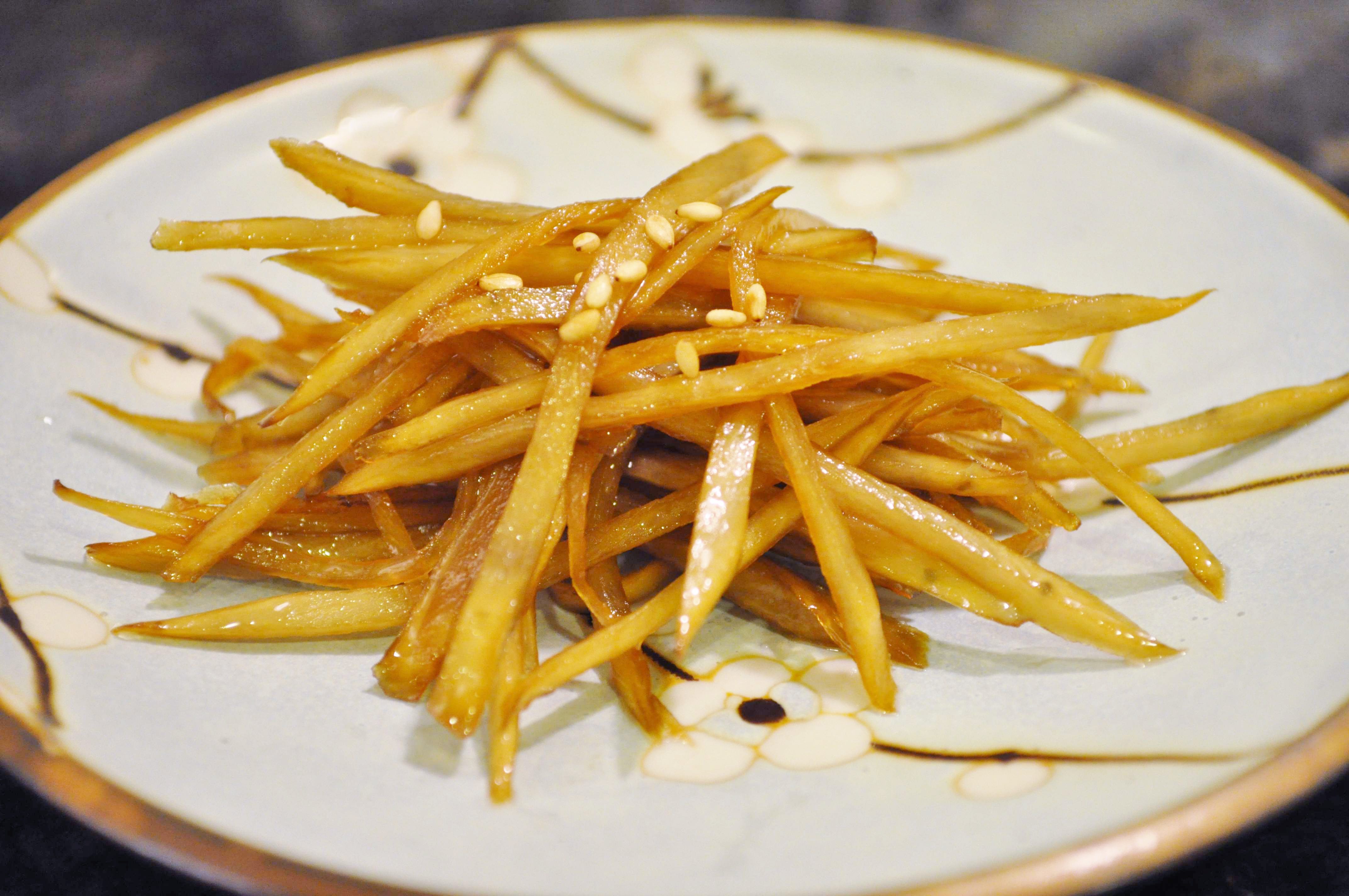
I used to think that sauteed burdock (woowong bokkeum) was one of those dishes that one could easily live without. Maybe it was because I never had much of it at home growing up or maybe it was because I never had one that was properly prepared from a fresh burdock. But my MIL (mother-in-law) changed all that. When she visited our home, she was so happy to find such great quality burdocks at our neighborhood market, she bought 4 roots the first time and then went back for more! I ended up spending an entire evening cleaning and julienning them.. and I was thinking to myself –‘why can’t she just buy the already sliced burdock packages? Is all this work worth it?’ But once I tasted the sauteed burdock made from these fresh roots, I could never go back. I may not get to make it as often as I would like but I make sure I take some time out every now and then to make this wonderful banchan which has now also become my daughter’s favorite.
Burdock or Woowong(우엉) is a really popular root vegetable in Korea and Japan (kobo). It has many health benefits and it is even treated as a medicinal herb in some cultures such as China and India. The common burdock is the root of a thistle (weed) which was introduced to North America by the European settlers and became an important source of winter food for Native Americans.
It is widely accepted that burdock root is a natural diuretic (U.S. National Library of Medicine and the National Institutes of Health). University of Maryland Medical Center also lists burdock as something that can be used for skin inflammations and wound healing. Other sources list that it can also help with diabetes, promote digestion and liver function (source: http://www.ehow.com/list_6671359_burdock-root-health-benefits.html) but science behind it seems to be a bit weak so I’m not sure about the medicinal properties but what I DO know is that it tastes good!
If you have access to a good oriental market, try to get a fresh burdock root. They are also sometimes sold in pre-washed, pre-cut packages which are not as good but will also work.
Ingredients
- 1 burdock root, julienned ( approx 4 C / 1.5 lb)
- 1 T vegetable (canola) oil
- 1 T soy sauce
- 4 tsp sugar
- 1 T mirin (rice wine)
- roasted sesame seeds
Directions
1. Peel the whole burdock (the root can be 2-3 ft long) and rinse. Cut off about 1 to 1 1/2 in off the woody part of the thicker end and also about 1/2 in off the bottom end. Julienne the burdock by first slicing it at an angle (3 mm thick) and then cutting those into thin strips (2-3 mm wide). You can also use a mandolin but I found that it was actually easier to cut with a knife because the burdock is so woody and hard. Some people like to cut the whole burdock into chunks (cylinders) first and then slice and julienne them – as you see in the carrot julienne photo on the right. This works great for carrots but because the burdock is so fibrous, it is more tender if you cut it against the grain first and then slice it (as shown below).
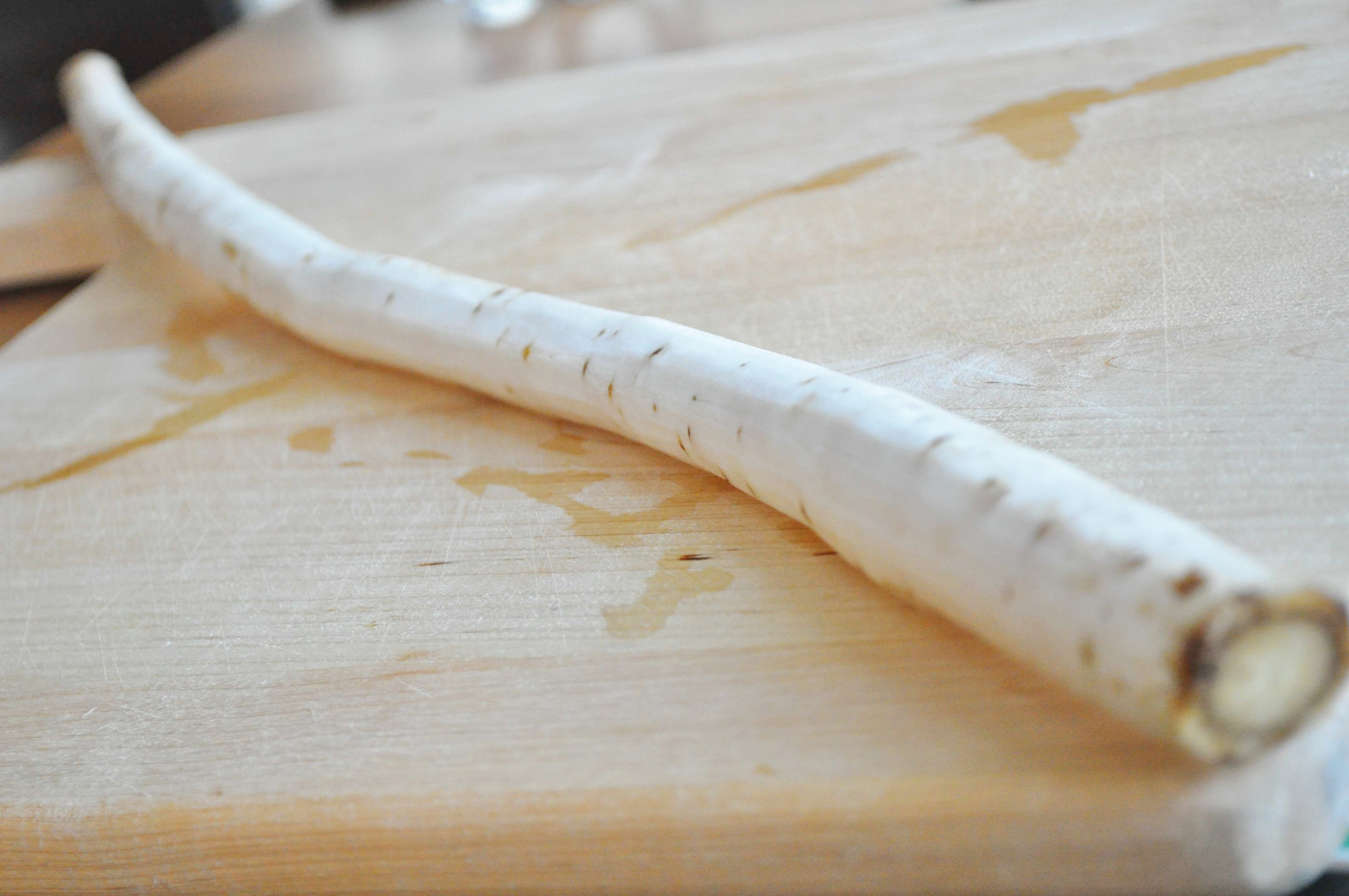
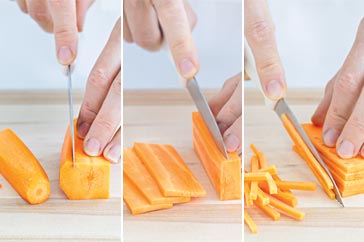
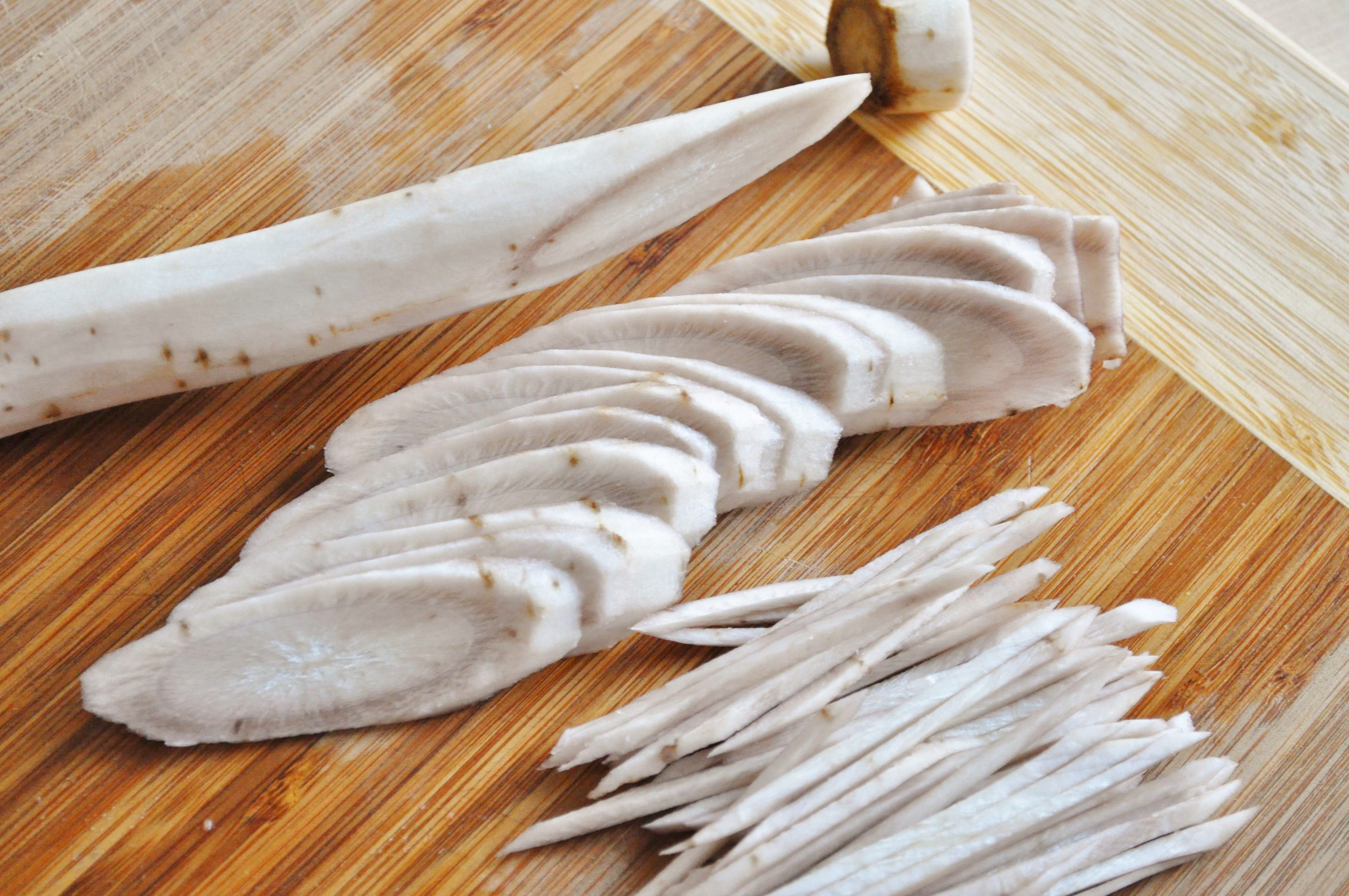
As you julienne the burdock, immerse them in cold water immediately to keep it from browning and also to draw out some of the bitter taste. The water will become brown – that’s OK. Rinse the burdock in cold water and drain.
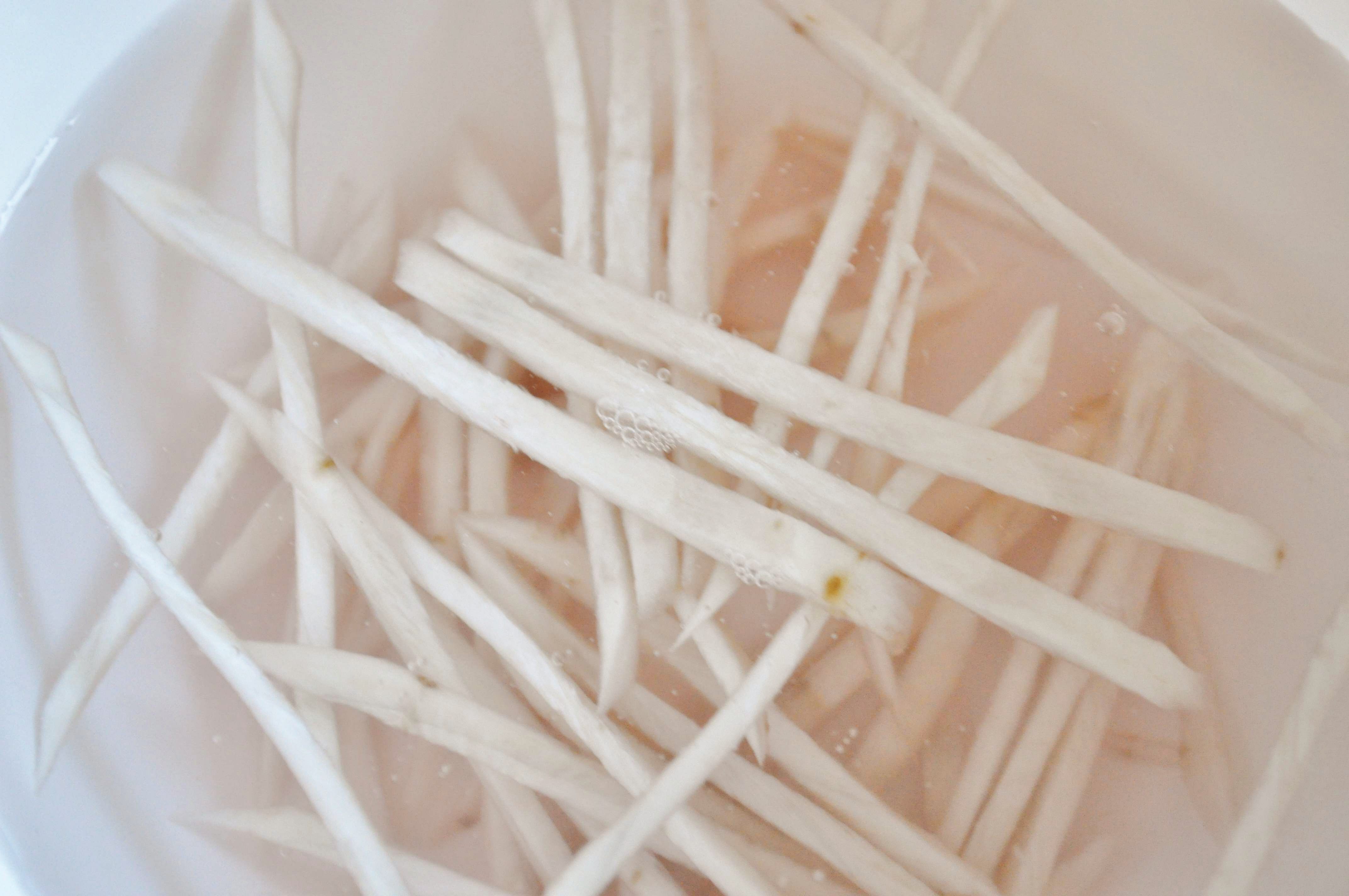
2. Heat 1 T of oil in a frying pan on medium high heat. Add burdock and sauté for a short time (less than a minute) until every piece is coated with oil.

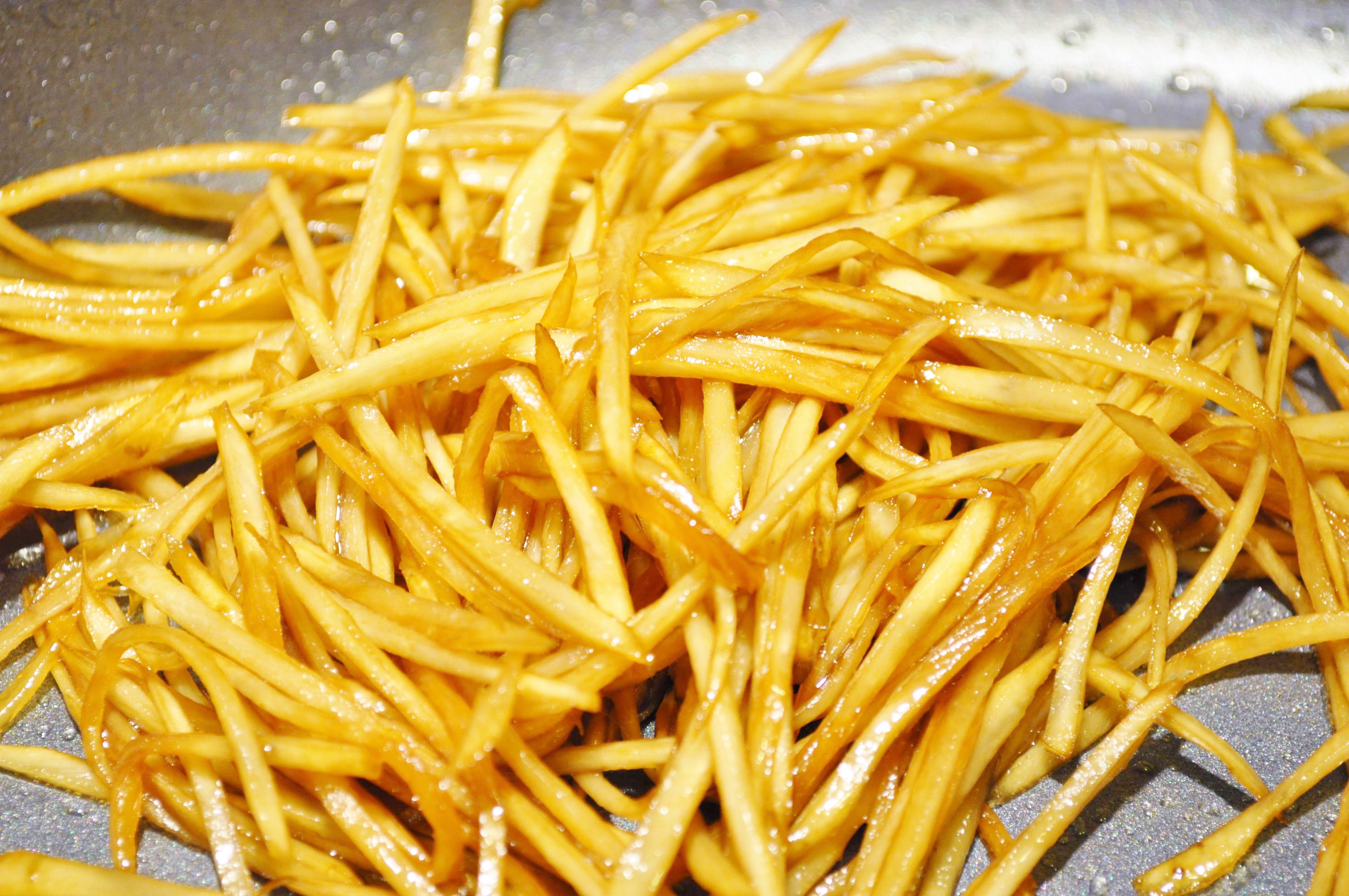
3. Lower the heat to medium and add soy sauce, mirin and sugar. Sauté for another 7 min or so until tender. Stir them occasionally so that they are evenly cooked.
4. Sprinkle some roasted sesame seeds before serving.
Uses
Woowong bokkeum is a great side dish that has a mild flavor and adds a light taste of salty sweetness to your meal.
- lunchbox banchan: It is a delicious banchan in lunchboxes (since it tastes best at room temperature) and pairs wonderfully with rice and roasted seaweed.
- bibimbap: Although burdock is not normally served in a traditional bibimbap dish, it adds a nice crunchy, chewy texture and a touch of earthiness that takes bibimbap to another level.
- kimbap: Our Korean market sells 2 kinds of kimbap – one with burdock and onewoowong (burdock) chapchae (MIL’s recipe)
without. The one with burdock is more expensive and you can probably imagine why.
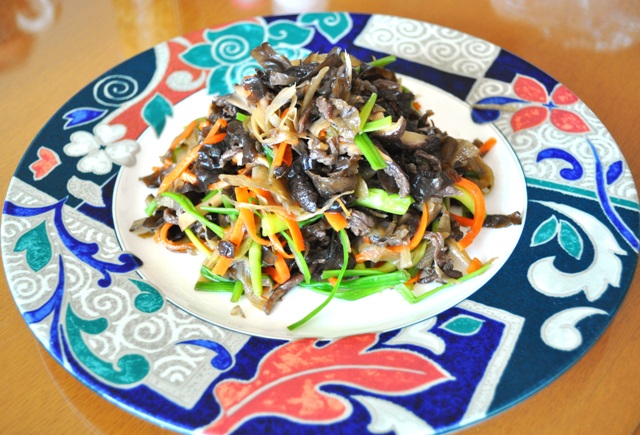
- woowong chapchae: Use burdock instead of the glass noodles to make chapchae. Great party dish – has a very delicate flavor that may not be grab your attention at first but keeps you coming back for more.
Storage
- Because cutting the burdock is a bit time consuming, I like to make woowong bokkeum in larger batches and store it in the fridge for up to 10 days.
- My MIL also divides them into smaller amounts and freezes them to use later in her woowong chapchae. I actually tasted it during my last visit to Korea and it was delicious! Cooked burdock freezes really well.
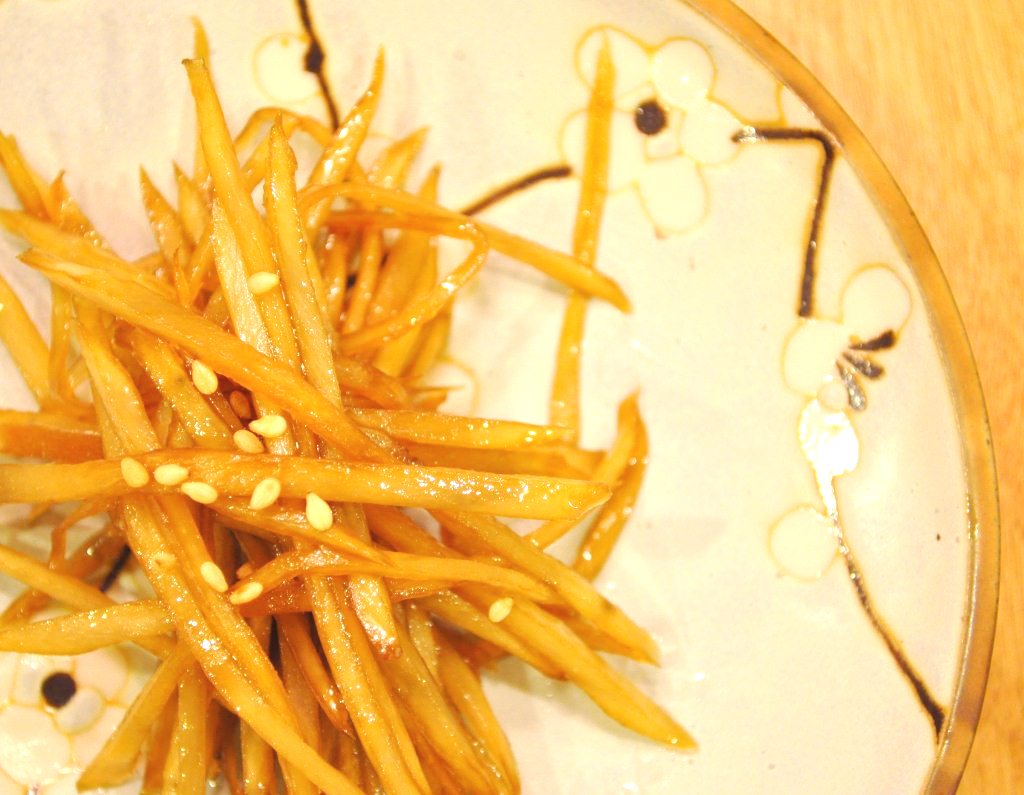
Sauteed Burdock (Woowong bokkeum)
Ingredients
- 1 burdock root (julienned, approx. 4 cups / 1.5 lb / 1 L / 680.4 g)
- 1 Tbsp vegetable oil (like canola)
- 1 Tbsp soy sauce
- 4 tsp sugar
- 1 Tbsp mirin (rice wine)
- Roasted sesame seeds
Instructions
- Peel the whole burdock (the root can be 2-3 ft long) and rinse. Cut off about 1 to 1 1/2 in off the woody part of the thicker end and also about 1/2 in off the bottom end. Julienne the burdock by first slicing it at an angle (3 mm thick) and then cutting those into thin strips (2-3 mm wide). You can also use a mandolin but I found that it was actually easier to cut with a knife because the burdock is so woody and hard.
- As you julienne the burdock, immerse them in cold water immediately to keep it from browning and also to draw out some of the bitter taste. The water will become brown – that’s OK. Rinse the burdock in cold water and drain.
- Heat 1 Tbs of oil in a frying pan over medium high heat. Add burdock and sauté for a short time (less than a minute) until every piece is coated with oil.
- Lower the heat to medium and add soy sauce, mirin, and sugar. Sauté for another 7 min or so until tender. Stir them occasionally so that they are evenly cooked.
- Sprinkle some roasted sesame seeds before serving.
Tips & Notes:
- If you have access to a good oriental market, try to get a fresh burdock root. They are also sometimes sold in pre-washed, pre-cut packages which are not as good but will also work.
- Because cutting the burdock is a bit time consuming, I like to make woowong bokkeum in larger batches and store it in the fridge for up to 10 days. Cooked burdock freezes really well too.
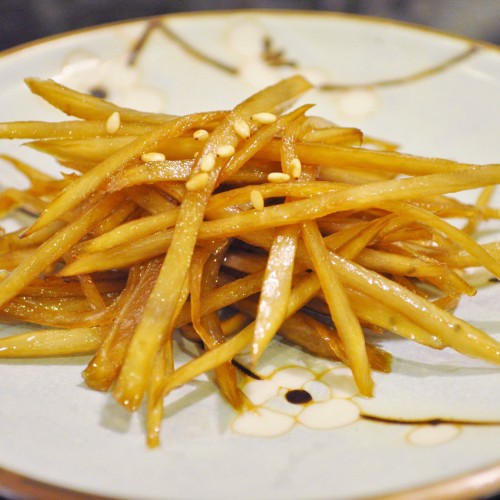

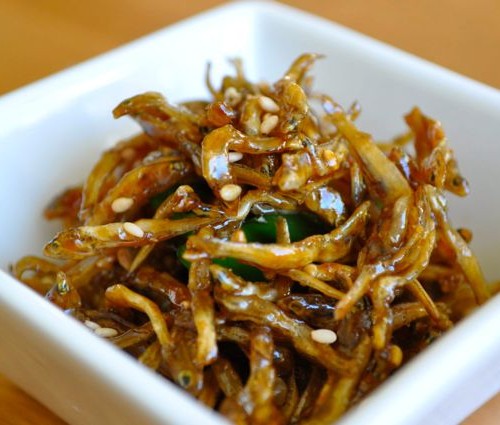

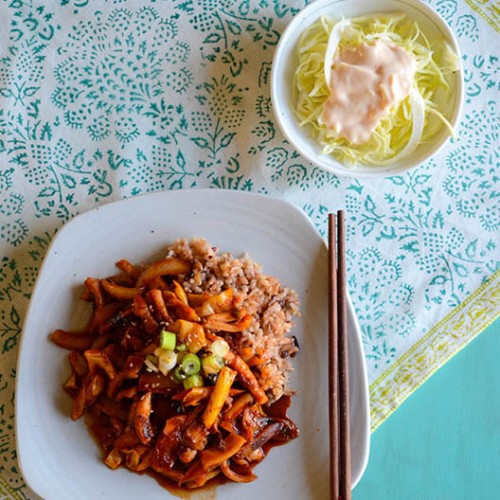















I’d like to try to make this. Where do I click to print the recipe?
Oh I’m so sorry, for some reason this post doesn’t have a printable recipe. Let me add that right now. Please check back in a couple hours. thanks!
This banchan recipe is awesome! First time cooking with burdock root and this recipe is definitely a keeper; thanks so much!
Oh I’m so glad to hear that! Isn’t burdock root wonderful? I love to add this as topping for bibimbap and filling for kimbap. Check out those recipes. Cheers!
I finally got around to using the pre-packaged burdock last week. First, it’s cut in matchsticks with square cut ends, and I found that less elegant than the long pointed pieces that I made myself. There were also a lot of mis-cuts – short, broken pieces or over large pieces, so again, it wasn’t lovely. Because it’s packaged and therefore somewhat pre-cooked, it can’t be cooked as long as the fresh. Even though I cooked it about 5 minutes instead of the usual 7, it was soft and felt overdone. I think it may just be soft no matter how you cook it, so the texture was lacking for me – the fresh still had a nice “al dente” texture that the packaged didn’t. As far as flavor goes, it hovered on the edge of bland. There was definitely the right flavor, just not much of it. I can see myself making this again when I’m in a real hurry and want a mild banchan, but not if there’s any option. I think burdock is better approached as a treat and an event by investing the time and effort to make the “real thing.” It’s got me wondering if fresh lotus root will ever show up in the market so I can compare it to the packaged.
Thanks so much for the detailed info on the packaged burdock root! Yes, I had suspected that it may be a little too soft…oh well..as I had mentioned in my post, you can always make a large batch of the fresh burdock saute and freeze them. The texture still comes out chewy and al dente even after you defrost it.
I have seen fresh lotus roots at Japanese markets and sometimes Chinese. Hopefully you can find them in your area.
The was a lot of work, but so delicious! Next time I will have to freeze some, because it’s too much for one person to go through fast enough. Yesterday I bought lotus roots to make your 연근조림 (it’s simmering right now) and I was delighted to find burdock root already cut into matchsticks in the same kind of package as the lotus roots, so I bought a bag and will see how they compare to the “real thing” after I’ve finished eating the lotus root. Thanks!
So glad that you decided to make it even tho it’s a lot of work. Would love to hear from you how the packaged burdock is…Thanks so much for commenting!
I absolutely love this dish! it’s amazing that in the old days people used these to make furniture etc, it’s strong enough to support a person yet it does wonders for health! so much fibre 🙂
Oh,wow I didn’t know they made furniture out of it?! Learn something new everyday…thanks!